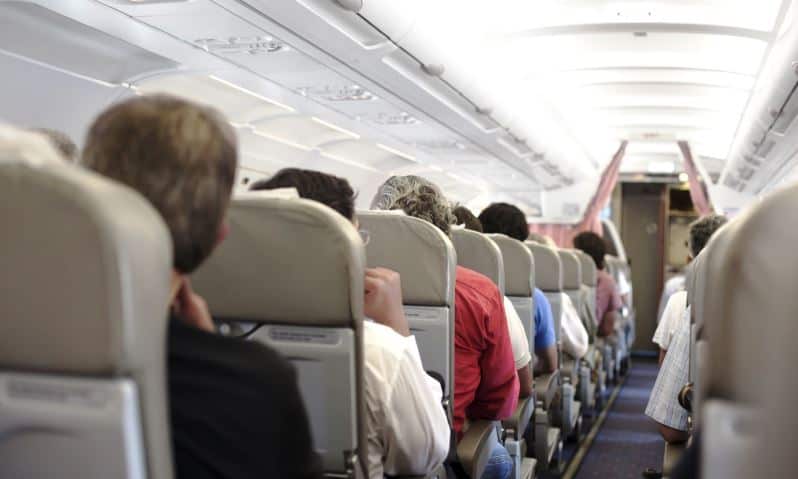I took my first flight as an airline passenger in 1992 and have lost count of the number of flights taken since.
It is, however, possible to quantify the number of what some people would call ‘negative experiences’, although to me – and in this context – there is only one negative outcome of the flight experience and that is for the aircraft to drop out of the sky like a brick.

Luck, it would seem, has been on my side in that delays have occurred mainly on return journeys and the airports in which they took place were well served with vendors of intoxicating libations that took the sting out of the situation. One flight in particular from Germany had the captain announce that drinks would be served whilst waiting for the push off, such was the bad weather that had caused this particular delay.
Delays are one thing but a diversion is something else entirely and in 2010 my flight from Turkey to London Gatwick was diverted to East Midlands Airport, much to the annoyance of many of the passengers, some of who had cars waiting for them at arrivals. They’d every right to be annoyed but the captain made things very clear – the aircraft had been diverted to avoid the risks associated with the Eyjafjallajökull ash cloud.
Three experiences that could be classified as ‘negative’ out of around a few dozen flights taken since the early 1990s isn’t a bad return, representing a real thumbs up for airlines and airport authorities that appear to do their best to make travelling from Point A to Point B as painless and stress free as possible.
Of course - whilst passengers grumble about delays – there are engineering solutions being applied to keep the aviation industry moving and earlier this week David Hawken explained how air traffic controllers are being helped to do just that.
Hawken is the engineering director of NATS, the organisation that yesterday alone handled 7,060 flights in Britain. On Wednesday he spoke at The Royal Academy of Engineering as part of its Innovation in Aerospace seminar, which included talks from ADS, Airbus Group Innovations, Hybrid Air Vehicles, Meggitt, and Rolls-Royce, a company making the news today for its work into lighter aero engines.
Radars, communications stations, data networks, and ground-based navigation aids form part of the technological armoury that helps NATS to keep airspace safe and mobile.
Hawken said: ‘Flight data processing is really at the heart of what we do; it’s the brains behind the function.
‘Its about getting people not just safely ready to go, but on time, efficiently, reliably and in a way that saves fuel as well.’
He described how NATS has evolved, a period of change in which customer engagement – finding out what’s important to them, what’s driving their demand – has led to operational flexibility not normally associated with a necessarily conservative and cautious organisation that once would’ve taken years to change airspace but can now accommodate new routes in a matter of weeks.
The gradual evolution has led also to a drop in delays, which a decade ago stood at 40 seconds per flight and now stands at 5.4 seconds.
‘A lot of that hasn’t just been down to technology,’ said Hawken. ‘It’s about controllers working with engineers, its been about us working with the airlines so that when we do have problems we can have teleconferences very quickly so that we can have collaborative decision making as to what we’re going to do to solve the problem so that it has the least effect overall.
‘When we do get a problem now, the airlines are involved in the conversation, as are all the airports across the country so we can minimise the effect for the customers and the flying public.’
Ultimately, however, its advances in electronic capabilities that are helping to make this evolution happen. iFacts, for example, lets air traffic controllers look 18 minutes ahead to predict where every aircraft is going to be within a certain sector of airspace.
‘We’re trying to give the controllers lots of ‘what if’ options so that they can make minor adjustments ahead of time,’ said Hawken. ‘They can slow aircraft down, they can make minor course corrections so actually, the aircraft don’t have to make tactical manoeuvres late in the flight or increase fuel burn.’
Further improvements are being introduced next year at Heathrow Airport, which will start using time-based separation for aircraft landing there.
Flights are separated by set distances dependent on the type of aircraft and the size of the spiralling turbulence – or wake vortex – they create as they fly.
During strong headwind conditions, aircraft fly more slowly over the ground resulting in extra time between each arrival. Having to maintain a set separation distance in those conditions reduces the landing rate and can have a significant knock-on effect to airport capacity, causing delays and cancellations.
NATS believes that time-based separation will help maintain the landing rate and save 80,000 minutes of delay every year, ‘halving the current delay figure while significantly reducing the need for airlines to cancel flights due to the affects of strong headwinds.’
Looking further forward, Hawken foresees a future in which air traffic controllers will go from being tactical to strategic and ‘deconflicting routes ahead of time and putting that into the flight planning system so that we can get a 4D trajectory that, if you follow it and everything else goes well – then actually it’ll be a conflict-free route: You’ll take off, you’ll follow this fuel-optimised route into cruise and land at the other end without any delay at the airport.’










Water Sector Talent Exodus Could Cripple The Sector
Maybe if things are essential for the running of a country and we want to pay a fair price we should be running these utilities on a not for profit...